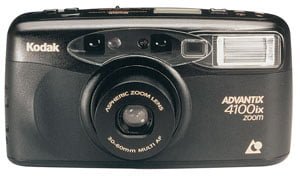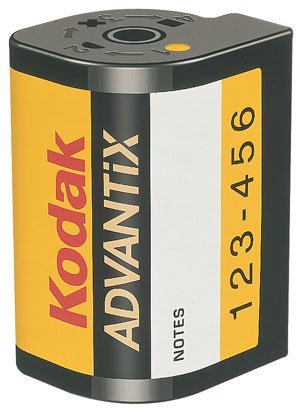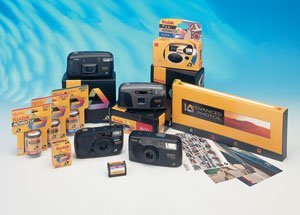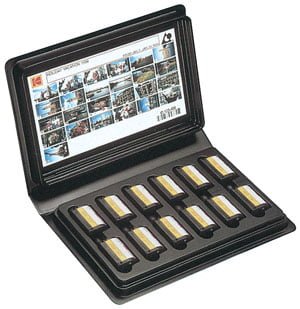
In its simplest form marketing answers the question – What does the customer want to buy? A key definition of marketing is: Marketing is the anticipation and identification of consumer wants and needs in order to meet these needs and to make a profit.
This case study models this marketing process. It shows how the world’s leading name in imaging researched and produced the photographic system that consumers asked for.
The case shows how an intelligent organisation can combine its market research antenna and its technological know-how and product development capability to make a product that pleases customers. Market research involves systematically finding out from consumers what their needs and requirements are.
Technological know-how involves being able to apply the latest knowledge in a practical way. Product development capability is the ability to bring on stream the products that provide consumers with the benefits which they want a product to have.
Constant change

Consumers’ wants and needs are changing all the time. As consumers become more sophisticated they want products to do more than the ones they currently have available to them – they want computers that work faster and are able to perform more operations, they want cars which are safer and more environmentally acceptable, they want toothbrushes which are gentler on the gums and so on. At the same time, technological advance means that yesterday’s goods and services quickly become dated. Organisations need to have their finger on the pulse of technological change. For example, manufacturers of training shoes have used new technologies to create air cushioned soles, giving trainers a light and springy feel, computer manufacturers have devised new computers with much more memory and which can work much more quickly than in the past, compact disc players have largely replaced record players and so on.
All of these are examples of technology moving forward. Marketing has a responsibility to recognise changes in technology, so that organisations can make appropriate decisions to keep abreast of change.

For example, when buying a photographic system, they don’t just want to “take pictures.” Instead they want to be able to produce high quality images, that capture a memorable moment or landscape, they want a camera that is easy to carry around; they want films that are easy to load; they want a quality focus; they want to be able to have their films processed within their chosen time period and much more. They want a sophisticated array of benefits – i.e. they want photographic systems to be designed around them. Today, consumers expect the market to revolve around them.
Why then has Kodak been able to meet the requirements of consumers? Before we look at the product that Kodak has provided for consumers, it is first necessary to look at Kodak’s organisational culture. To be successful in the market-place, an organisation needs to have a culture based around marketing. Driving the culture of an organisation is its “vision” and its “mission” statement. By studying these, it immediately becomes evident why Kodak has been able to serve the consumer.
Vision
The Corporate Vision of Kodak is: “Our heritage has been and our future is to be the World Leader in Imaging”. To be successful in meeting this vision Kodak’s mission statement is to: “Build a world-class, results-oriented culture… by providing…solutions to capture, store, process, output and communicate… images to people and machines anywhere, anytime… bringing differentiated, cost-effective solutions.. to the market-place quickly and with flawless quality…through a diverse team of energetic employees with the world-class talent and skills necessary to sustain Kodak as the World Leader in Imaging. In this way, we will achieve our fundamental objective of Total Customer Satisfaction and our consequent goals of Increased Global Market Share and Superior Financial Performance.”
This emphasis is not new to Kodak but it is something to which it has given more priority in recent times. The culture of the organisation is today focused on achieving excellence in every corner of the world by putting the customer first and gearing the company to growth in order to achieve the vision of being the World Leader in Imaging.
The Advanced Photo System should therefore be seen as a product of the way Kodak works today. Over the years, Kodak has been at the forefront of changes in imaging, which are set out in the earlier Times 100 case study “Managing a Product Portfolio” (1995). Kodak recognises that products have a limited life cycle and that it is necessary to introduce newer products and “bigger baskets of benefits.”
Years of consumer research and major advances in technology went into the development of the simplest and smartest photo system ever: The Advanced Photo System. The comments which consumers were making to Kodak in this market research phase are illustrated below:
“I’d switch to a photo system that helps me get more good shots from each roll.”
Research showed unanimously that consumers care far more about getting good pictures than they do about picture-taking. Mixed lighting conditions until recently were rarely considered by photofinishing equipment. The result was less than satisfied consumers.
“I wish I had a choice of picture formats so I could compose the shot better.”
Research showed that consumers wanted the ability to change picture formats to suit the subject matter. More picture format choices would give the consumer more picture control and more creativity.
“I’d enjoy my pictures more if there was a way to identify each print.”
Dates, circumstances and names can become a blur as time passes. Research showed that consumers wanted a non-intrusive way to display picture information.
“The biggest hassle is finding the right negatives for reprints.”
The research indicates that, on average, only 2% of all photos are ever reprinted. The consumer’s ability to enjoy to the full and to share pictures is lost, as is the retailer’s opportunity for increased revenue.

Armed with extensive market research findings, Kodak was then able to introduce product developments which were able to create a great leap forward in imaging. Kodak has been able to develop a new system that gives consumers a key core benefit: more confidence in their ability to capture memories by taking the guesswork out of photography. The complete Advanced Photo System, which is compatible with all Advanced Photo System products, includes films, cameras and innovative photofinishing technology.

This Information Exchange (IX) between cameras, film and ultimately the processor, guarantees a higher proportion of better pictures, more of the time. Using Kodak-developed “thrust engine” technology, the new cassette functions as a small machine, capable of advancing and retracting the film it contains.
This innovative design makes possible a number of exciting, consumer-friendly features.
- Drop-in Film Loading Research had shown that previously 5% of all films were ruined because of incorrect loading. The new drop-in benefit boosts consumer confidence in picture-taking by eliminating the risk of loading film. This virtually eliminates double exposure and fogged rolls.
- Mid-roll Change This allows the user to easily change film in the middle of a roll (with more sophisticated camera models).
- Film Safe A Film Safe holds and protects processed negatives returned from the photofinisher so they are not exposed to dust or scratching.
- Film Status Indicator This feature tells the user at a glance whether the roll is unexposed, partially exposed, fully exposed or processed.
- Environmentally Acceptable Cassettes are maintained as Film Safes rather than disposed of and are made completely from recyclable plastic.
- Better Overall Picture Quality Exposure information stored on the coating is used by the photofinisher to “custom print” each frame, thereby optimising print quality.
- Greater Print Yield Information Exchange improves the picture quality, especially with flash pictures and backlit scenes.
- A Choice of Print Formats The consumer is able to choose from a variety of print formats.
- More to Come In the future, magnetics will give consumers exciting new ways to enjoy their pictures, such as adding more text to photos or even recording sound.
The cameras – focused on consumer requirements
Like the rest of the system, the new KODAK ADVANTIX cameras were designed to take the hassle and guesswork out of photography. The range of cameras offer differing levels of sophistication and pricing structures. Each one offers these basic Advanced Photo System features:
i. More Compact, More Portable Design The cameras are 15-20% smaller than comparable 35mm cameras. Cameras feature sleek, curved styling with built-in grips that make them comfortable to
handle and use. They fit easily into a pocket or handbag ensuring that the camera is always at hand to capture that special moment.
ii. Drop-In Film Loading As described earlier, a simple trouble-free system which assures the user that the film is advancing properly.
iii. In-Camera Picture Formatting The user is able to adjust the setting on the camera to select one of three print formats:
- Classic (“C”) – similar to today’s 35mm prints.
- Group (“H”) – for slightly wider group shots.
- Panoramic (“P”) – for panoramic scenes and tall, narrow and long subjects.
All KODAK ADVANTIX cameras feature large, clear, easy-to-locate viewfinders. They eliminate the framing and target lines that often confuse photographers and, instead, provide distinct borders that frame the scene to appear in the print.
Kodak has developed exceptional glass lenses for all KODAK ADVANTIX cameras. They all feature SENSALITE™ flash technology, which automatically determines when flash is needed. In some cameras, the flash is built into the camera body, along with a separate red-eye reduction lamp. Other cameras feature Kodak’s patented “cobra” flip-up flash, which distances the flash from the lens to reduce red-eye automatically.
True to its vision and mission, Kodak has built every part of its photography system around the consumer. By speaking to customers every step of the way, Kodak has designed its best ever camera range. Instead of providing prototype cameras, Kodak supplied blank blocks of wood and asked them to place controls, such as the viewfinder and LCD panel, where they seemed most comfortable. These preferences guided the camera design, which in some instances is quite different from traditional cameras.
- The LCD panel is situated on the back of most ADVANTIX cameras so that the information can be seen adjacent to the viewfinder.
- The shutter release is on the right and the switch that selects different print formats is on the left. This allows the format to be changed and the shutter clicked without moving the camera.
- Exposure counters and LCD panels display the number of frames remaining on the film cassette, adopting a count down rather than count up approach.
Evaluating the new product

The results show that consumers around the world have already given the Advanced Photo System the thumbs up. Kodak has tested the concept and products in 40 consumer studies across 11 countries and the research findings have been extremely positive. In recent trials, hundreds of consumers were given KODAK ADVANTIX films and cameras to try for two weeks.
Creating compatibility
A major problem faced by computer companies in the last 20 years has been that of incompatibility. Rival companies developed their own hardware and software in order to corner an exclusive share of the total market. However, in doing so they restricted their total market share. In recent times they have seen the folly of their ways and are setting up compatible systems. They are regretting their earlier lack of vision.
In order to avoid this folly, Kodak has worked to create compatibility for its new photographic systems. In 1991, Kodak led a group of five photographic industry leaders to develop this new Advanced Photo System, which it is believed will rival the great developments in photographic history, such as the introduction of the Brownie camera in the first year of the twentieth century. This industry co-operation ensured that all System products, whichever the manufacturer, would be compatible from the outset. More than forty additional companies in the UK alone have now licensed the standards to develop Advanced Photo System products and services.
In the early 1990s, Kodak initiated the most comprehensive international consumer survey ever taken. Development of the Advanced Photo System is a direct result of listening to exactly what consumers want from photography. They outlined a number of shortcomings in existing photography and confirmed the benefits they would most like to have. The result is the Advanced Photo System.
 Building a photographic system around the user (PDF)
Building a photographic system around the user (PDF) 